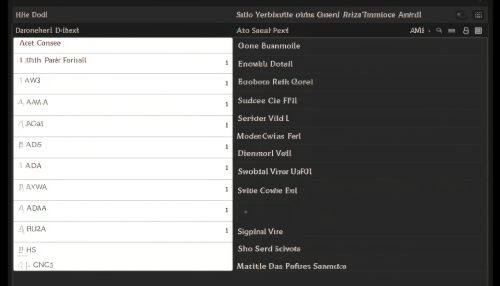Dynamic typing
Introduction
Dynamic typing is a fundamental concept in the field of computer science, specifically in programming language theory. It refers to a system in which variables are not bound to a specific data type; instead, their type can change during the execution of the program. This is in contrast to static typing, where variables are bound to a data type at compile time.


Characteristics of Dynamic Typing
Dynamic typing is characterized by several key features. These include:
- Flexibility: Dynamic typing allows for greater flexibility in programming. Variables can be reassigned to different types of data as needed, which can make the code more adaptable to changing requirements or conditions.
- Ease of use: Dynamically typed languages are often considered easier to write and read, as they require less upfront declaration of variable types. This can make them more accessible for beginners or for rapid prototyping.
- Runtime type checking: In dynamically typed languages, type checking is performed at runtime. This means that type errors are not caught until the program is executed, which can lead to runtime errors if not handled properly.
Dynamic Typing in Programming Languages
Many popular programming languages utilize dynamic typing. These include Python, Ruby, JavaScript, and PHP. Each of these languages implements dynamic typing in its own way, but they all allow variables to be reassigned to different types of data during the execution of the program.
For example, in Python, a variable can be assigned to an integer, and then reassigned to a string:
```python x = 10 x = "Hello, World!" ```
In this example, the variable `x` initially holds an integer value, but is later reassigned to hold a string. This is possible because Python is a dynamically typed language.
Advantages and Disadvantages of Dynamic Typing
Like any programming paradigm, dynamic typing has both advantages and disadvantages.
Advantages include:
- Simplicity: Dynamically typed languages are often simpler to write and read, as they do not require explicit type declarations. This can make them more accessible for beginners or for rapid prototyping.
- Flexibility: Dynamic typing allows for greater flexibility in programming. Variables can be reassigned to different types of data as needed, which can make the code more adaptable to changing requirements or conditions.
Disadvantages include:
- Runtime errors: Because type checking is performed at runtime, type errors are not caught until the program is executed. This can lead to runtime errors if not handled properly.
- Performance: Dynamically typed languages can be slower than statically typed languages, as they require additional resources for type checking at runtime.
Comparison with Static Typing
Dynamic typing is often contrasted with static typing, a system in which variables are bound to a specific data type at compile time. While dynamic typing offers more flexibility, static typing can offer benefits in terms of performance and error detection.
In statically typed languages, such as Java or C++, variables must be declared with a specific type, and cannot be reassigned to a different type of data. This can help catch type errors at compile time, before the program is executed.
Conclusion
Dynamic typing is a key concept in programming language theory, offering flexibility and ease of use at the cost of potential runtime errors and performance issues. Understanding the characteristics, advantages, and disadvantages of dynamic typing can help programmers choose the right language and paradigm for their needs.
